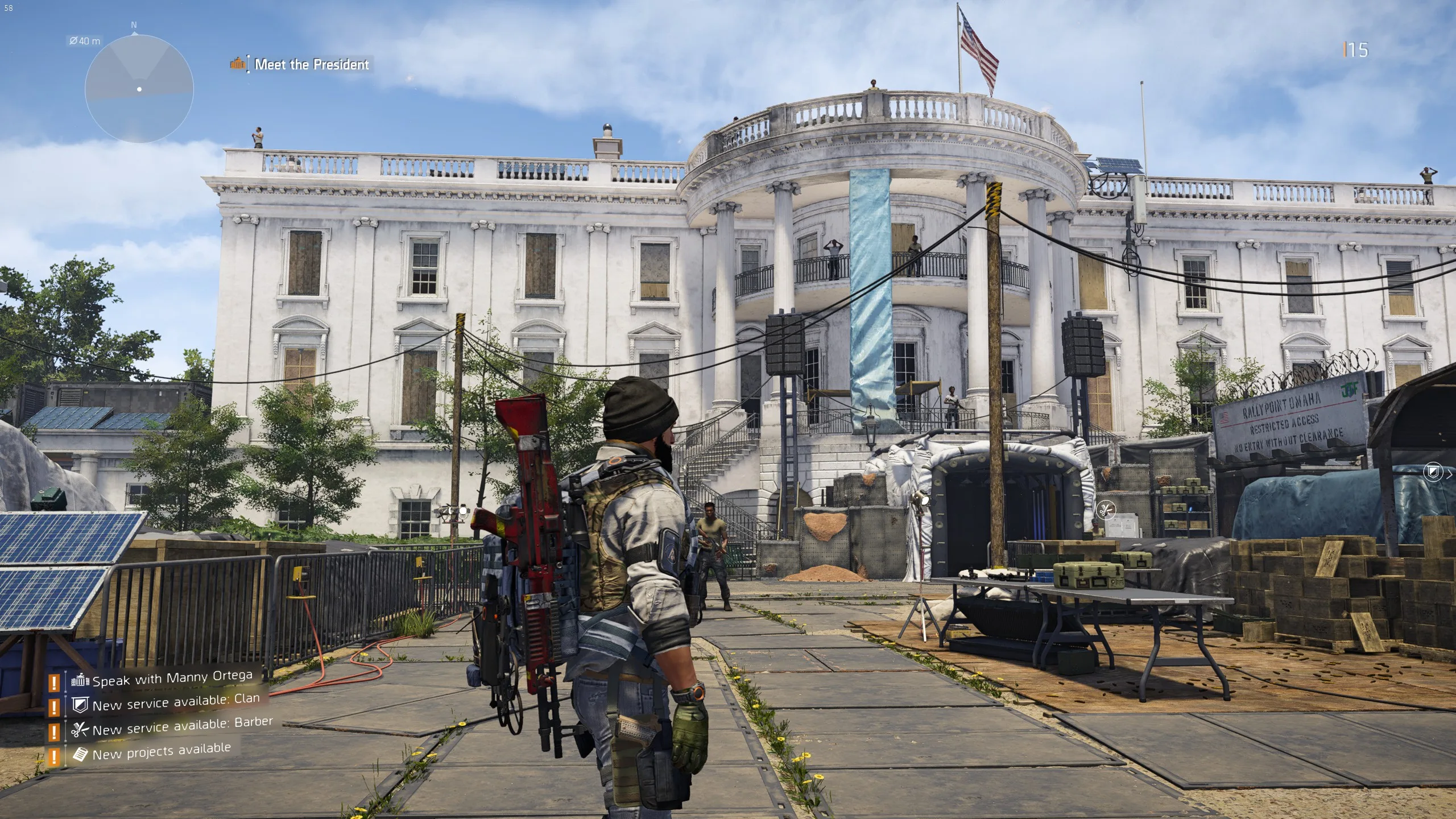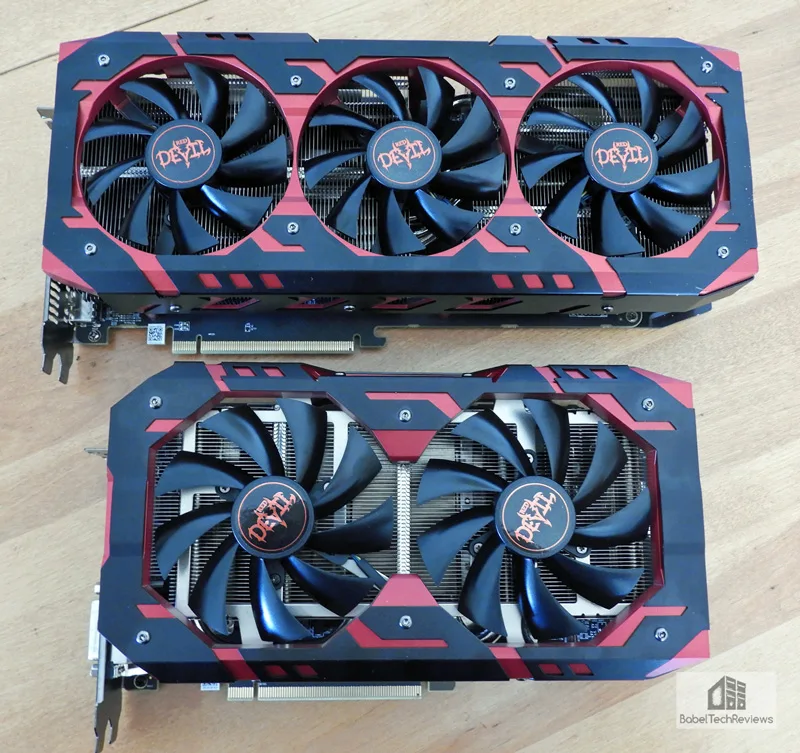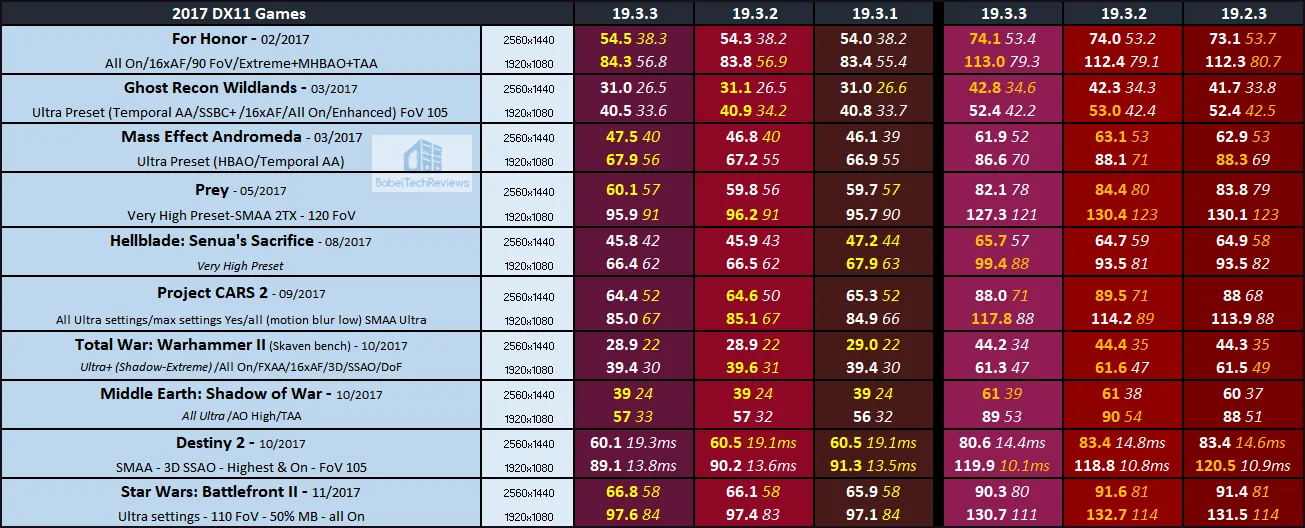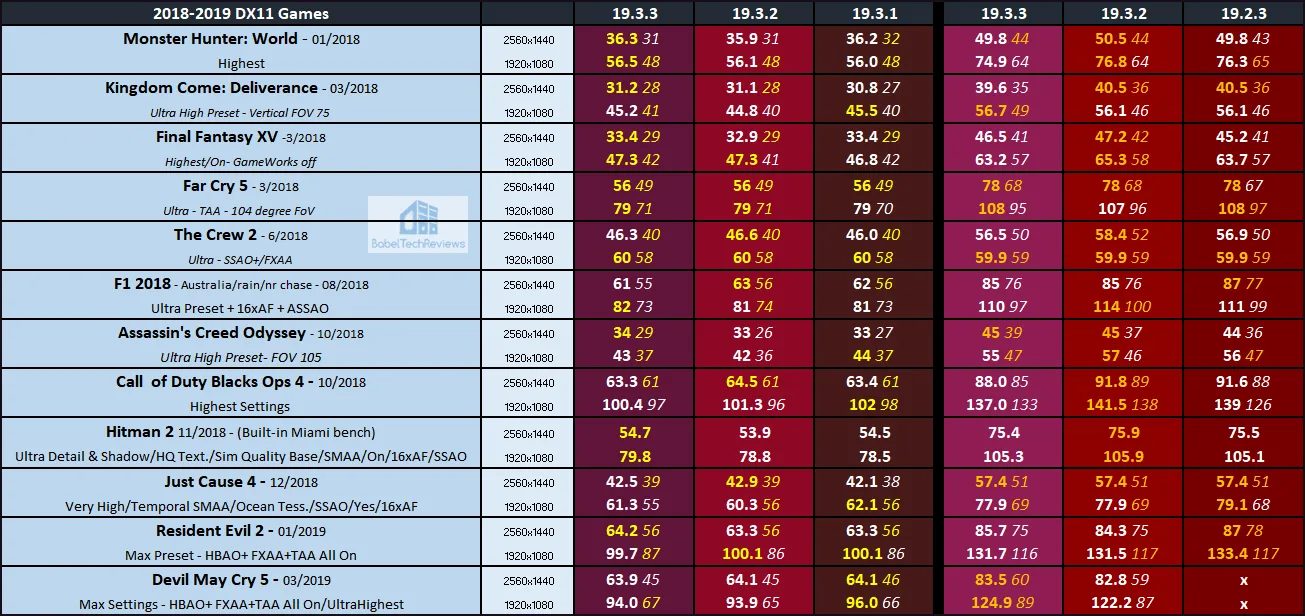Adrenalin Software Edition 19.3.3 Performance Analysis featuring the Red Devils RX Vega 56 & RX 590 with 42 Games
As a BabelTechReviews regular feature, this driver performance analysis will chart the performance of 42 PC games using the latest Radeon Software Adrenalin Edition 19.3.3 which was released last week. We will compare these latest drivers with two sets of earlier drivers using the the Red Devil RX 590 and the Red Devil RX Vega 56.
We document the performance changes of the current Adrenalin Software 19.3.3 Edition on Windows 10 at 1920×1080 and at 2560×1440 resolutions using the latest games including The Division 2, Devil May Cry 5, and Metro Exodus.  Our testing platform is a recent install of Windows 10 64-bit Home Edition, and we are using an i7-8700K which turbos all 6 cores to 4.7 GHz, an EVGA Z370 FTW motherboard, and 16GB of HyperX DDR4 3333MHz. The games tested, settings, and hardware are identical except for the drivers being compared.
Our testing platform is a recent install of Windows 10 64-bit Home Edition, and we are using an i7-8700K which turbos all 6 cores to 4.7 GHz, an EVGA Z370 FTW motherboard, and 16GB of HyperX DDR4 3333MHz. The games tested, settings, and hardware are identical except for the drivers being compared.
For the performance changes of the Adrenalin 19.3.3 drivers from earlier drivers using 42 games, let’s get to the test configuration, to the driver release notes, and then to our results.
Test Configuration – Hardware
- Intel Core i7-8700K (HyperThreading and Turbo boost are on to 4.7 GHz for all cores; Coffee Lake DX11 CPU graphics).
- EVGA Z370 FTW motherboard (Intel Z370 chipset, latest BIOS, PCIe 3.0/3.1 specification, CrossFire/SLI 8x+8x), supplied by EVGA
- HyperX 16GB DDR4 (2×8 GB, dual channel at 3333 MHz), supplied by HyperX
- Red Devil RX 590 8 GB, at stock Red Devil speeds, on loan from PowerColor
- Red Devil RX Vega 56 8 GB, at stock Red Devil speeds, on loan from PowerColor
- EVGA Nu Audio PCIe soundcard, supplied by EVGA
- 480 GB Team Group SSD
- 1.92 TB San Disk enterprise class SSD
- 2 TB Micron 1100 SSD
- Seasonic 850W Gold Focus power supply unit
- EVGA CLC 280mm CPU water cooler, supplied by EVGA
- Onboard Realtek Audio
- Edifier R1280T active speakers
- EVGA DG-77, mid-tower case supplied by EVGA
- Monoprice Crystal Pro 4K
Test Configuration – Software
- AMD’s Radeon Software Adrenalin Edition 19.3.3 is compared with 19.3.2. In addition, 19.3.1 is compared using the RX 590, and 19.2.3 is compared using the RX Vega 56.
- VSync is forced off.
- AA enabled as noted in games; all in-game settings are specified
- Gaming results show average frame rates in bold including minimum frame rates shown on the chart next to the averages in a smaller italics font.
- Highest quality sound (stereo) used in all games.
- Windows 10 64-bit Home edition. All DX11 titles were run under DX11 render paths. DX12 titles are generally run under the DX12 render path unless performance is lower than with DX11. Three games use the Vulkan API.
- Latest DirectX
- All games are patched to their latest versions at time of publication
- Wattman
- OCAT
- Fraps, latest version
42 PC Game benchmark suite & 3 synthetic tests
Synthetic
- Firestrike – Basic & Extreme
- Time Spy DX12
- Superposition
DX11 Games
- Grand Theft Auto V
- The Witcher 3
- Fallout 4
- Rainbow Six Siege
- Battlefield 1
- For Honor
- Ghost Recon Wildlands
- Mass Effect: Andromeda
- Prey
- Hellblade: Senua’s Sacrifice
- Project CARS 2
- Middle Earth: Shadow of War
- Total War: Warhammer II
- Destiny 2
- Star Wars: Battlefront II
- Monster Hunter: World
- Kingdom Come: Deliverance
- Final Fantasy XV
- Far Cry 5
- The Crew 2
- F1 2018
- Assassin’s Creed: Odyssey
- Call of Duty: Black Ops 4
- Hitman 2
- Just Cause 4
- Resident Evil 2
- Devil May Cry 5
DX12 Games
- Tom Clancy’s The Division
- Ashes of the Singularity: Escalation
- Hitman
- Deus Ex Mankind Divided
- Gears of War 4
- Civilization VI
- Sniper Elite 4
- Forza 7
- Total War: Warhammer II
- Shadow of the Tomb Raider
- Battlefield V
- Metro Exodus
- Tom Clancy’s The Division 2
Vulkan Games
- DOOM
- Wolfenstein: The New Colossus
- Strange Brigade
AMD Control Center Radeon Settings
All AMD settings are set with all optimizations off; Vsync is forced off, Texture Filtering is set to High, and Tessellation uses application settings. These same settings are used across all drivers so that the driver performance of each edition can be compared identically.
We used Wattman to set power, temperature, and fan limits to their maximums to prevent throttling. Adrenalin Software 19.3.3 Edition can be downloaded starting here. The release notes are found here. The included highlights below are taken directly from AMD’s website:
Radeon Software Adrenalin 2019 Edition 19.3.3 Highlights
Support For
- Sekiro™: Shadows Die Twice
- Generation Zero
Fixed Issues
- Rainbow Six Siege™ may experience intermittent corruption or flickering on some game textures during gameplay.
- DOTA™2 VR may experience stutter on some HMD devices when using the Vulkan® API.
Known Issues
- Mouse cursors may disappear or move out of the boundary of the top of a display on AMD Ryzen Mobile Processors with Radeon Vega Graphics.
- Performance metrics overlay and Radeon WattMan gauges may experience inaccurate fluctuating readings on AMD Radeon VII.
Important Notes
- AMD Ryzen™ Mobile Processors with Radeon™ Vega Graphics FAQ for Radeon Software Adrenalin 2019 Edition can be found here.
Package Contents
The Radeon Software Adrenalin 2019 Edition 19.3.3 installation package contains the following:
- Radeon Software Adrenalin 2019 Edition 19.3.3 Driver Version 18.50.27.09 (Windows Driver Store Version 25.20.15027.9004)
The Radeon Software Adrenalin 2019 Edition 19.3.3 installation package can be downloaded from the following links:
By clicking the Download button, you are confirming that you have read and agreed to be bound by the terms and conditions of the End User License Agreement (“EULA”). If you do not agree to the terms and conditions of these licenses, you do not have a license to any of the AMD software provided by this download.
- Radeon Software Adrenalin Edition 19.3.3 Driver for Windows® 10 64-bit
- Radeon Software Adrenalin Edition 19.3.3 Driver for Windows® 7 64-bit
Let’s head to the charts to compare the driver changes from two earlier Adrenalin Software Editions to the brand new Adrenalin Software 19.3.3 Edition which released last week.
The Summary Charts
Below are the summary charts of 42 games and 3 synthetic tests. Each game’s performance is charted to compare the driver progression of the latest Radeon Software Adrenalin Edition 19.3.3. The highest settings are chosen, the driver versions and the specific settings are listed on the charts. The benches were run at 1920×1080 and at 2560×1440. Open each chart in a separate window or tab for best viewing.
Most results show average framerates and higher is better. Minimum framerates are next to the averages in italics and in a slightly smaller font. The games benched with OCAT show average framerates but the minimums are expressed by frametimes in ms where lower numbers are better.
Columns 1-3 are devoted to the RX 590 and Columns 4-6 are for the RX Vega 56. In the case of RX 590, 19.3.3 is compared with 19.3.2 and 19.3.1. For RX Vega 56, 19.3.3 is compared with 19.3.2 and last month’s 19.2.3. Yellow text for the RX 590 and gold text for the RX Vega 56 indicates a “win” for the highest performing driver and if the performance is equal, all sets of numbers are given in colored text.
There are many minor incremental performance improvements with both of our test cards using the latest Adrenalin Software 19.3.3 drivers. There are also some incremental performance regressions, but they are insignificant. The Vulkan bug formerly present with DOOM and with Strange Brigade appears to have been resolved for the RX 590 with the last two driver sets. If you are playing The Division 2 using RX Vega 56, it may be wise to upgrade to the very latest driver set to get the highest performance.
Let’s head to our conclusion.
Conclusion:
We would recommend upgrading to the latest Radeon Adrenalin Software Edition 19.3.3 from any previous driver set because there are some advantages that might be useful, depending on which game you are playing. We found this driver to be very stable and we encountered no significant issues with any of our games. We are also glad to report that the Vulkan bug which was very specific to certain hardware configurations appears to have been resolved with the latest drivers.
Over time, Adrenalin software drivers show mostly continued positive performance improvement which may be more notable in some of the newer games. Adrenalin 19.3.3 should also be the driver of choice for The Division 2, especially for RX Vega gamers. There were a few relatively insignificant incremental regressions, but overall the performance continues to improve.
The new features of the Radeon Adrenalin 2019 annual software update are being improved continuing with the 19.3.3 edition, and they are welcome and worth exploring. The advantages of using the latest drivers generally outweigh any disadvantages.
We have decided not to show competing cards in future driver performance analyses, but will leave that for video card reviews and for special reviews that focus on those comparisons. We will drop The Division (1) from our benchmark suite to make room for newer games as they are released. If you would like to make a request for other games to be added or dropped, please let us know in the comment section below.
This week we will post a virtual reality (VR) performance comparison between the GTX 1080 Ti and the RX 2080 that expands on last year’s review.
Happy gaming!








